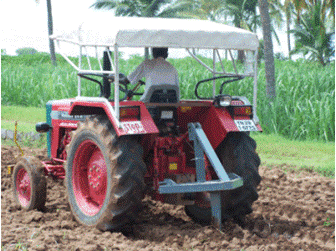
|
|
| Home | Seasons & Varieties | Tillage | Nutrient Mgmnt | Irrigation Mgmnt | Weed Mgmnt | Crop Protection | Cost of Cultivation | Photobank | |
Disaster Management :: Tsunami :: Agricultural Technologies |
|
|
AGRICULTURAL TECHNOLOGIES FOR TSUNAMI DEVASTATED AREAS - NAGAPATTINAM DISTRICT On 26 December 2004, Tsunami waves wreaked havoc on the coastal regions of the Indian Ocean and claimed around 400,000 lives. In Tamil Nadu the worst affected district is Nagapattinam district. The scheme “Resilience of agricultural lands in tsunami devastated coastal areas of Nagapattinam district of Tamil Nadu” is operating for development of sustainable livelihood of affected farmers through better crop production and allied agricultural activities and the management strategies drawn were as detailed below: 1. Soil management
2. Water management
3. Crop management
Transplanting : CO 43, TRY 1 and ADT 43
4. Livelihood management
Telicherry breed of goatsis introduced to this region.
Source: Vadivel, E., and S. Prabhu Kumar. Agricultural Technologies for Tsunami Devastated Areas - Nagapattinam District. In District specific technology inventory for Tamil Nadu and Puducherry, DEE, TNAU, CBE -3, p 349-351.
|
|
| Home | Seasons & Varieties | Tillage |Nutrient Management | Irrigation Management | Weed Management | Crop Protection | Cost of Cultivation | Disclaimer
© All Rights Reserved. TNAU-2016 |
|
